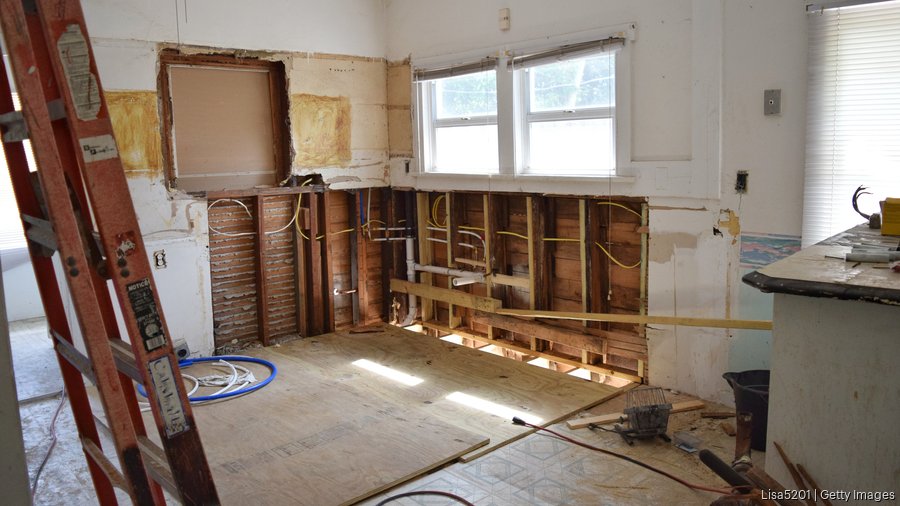
Austin Business Journal reports, "Home flippers are seeing their profits shrink dramatically, plummeting to the lowest point in years.
The latest report from ATTOM, which provides property data and analytics, found that home flippers netted a 25.1% return on investment before expenses in the second quarter, the lowest margin ATTOM has recorded since the second quarter of 2008. It's also down from a high point of a 62.9% in fall 2012.
Gross profit, the difference between what a flipper paid for a property and what they sold it for, also has dropped. The typical flipped home netted $65,300 in the second quarter, about 4% less than the first quarter and 13.6% less than the second quarter of 2024.
The culprit? High home prices that push flippers to buy in at a higher cost, squeezing margins and trimming profits.
"We’re seeing very low profit margins from home flipping because of the historically high cost of homes,” said ATTOM CEO Rob Barber, in a statement with the data. “The initial buy-in for properties that are ideal for flipping, often lower-priced homes that may need some work, keeps going up.”
About 7.4% of homes sold in the second quarter were sold by flippers, according to ATTOM, down from 8.3% in the first quarter and slightly lower than the 7.5% of homes sold in the second quarter of 2024. But as flippers scour the housing market for deals, they also are competing with homebuyers looking for affordable properties, Barber said.
“As prospective homeowners get priced out of the middle and high end of the market, they’re more likely to be competing with flippers over the same homes,” Barber said.
ATTOM defined a flipped home as any arms-length transaction that occurred in the quarter where a previous arms-length transaction on the same property had occurred within the last 12 months. The median purchase price for what flippers paid for these homes was $259,700 in the second quarter, the highest it has been since ATTOM began tracking the data in 2000.
The rate of home flips as a percentage of total sales fell in 86% of the 183 metro areas that ATTOM analyzed compared to first-quarter flip rates. The rate of home flips was down in 56% of metro areas compared to the second quarter of 2024.
Flip rates vary geographically
Georgia cities dominate ATTOM's list of the top areas for home flippers. In Warner Robins, Georgia, 18.5% of total sales were by home flippers. Macon was next at 15.5%, followed by Atlanta at 13.6%. Columbus, Georgia, and Memphis, Tennessee rounded out the top five markets.
Other larger cities with higher rates of home flipping include Birmingham, Alabama, with 11.8% of home sales by flippers, along with 11.2% in Cleveland and 10.5% in Columbus, Ohio. Big cities with the lowest rates include Seattle at 4.1%, New Orleans at 4.5%, Boston at 4.8%, and Portland, Oregon, and Honolulu each at 5%.
When it comes to profitability, home flippers are faring well in Pittsburgh, where the median profit margin in the second quarter reached more than 106% before expenses, the most among markets in ATTOM's research. Shreveport, Louisiana, flippers saw a profit margin of 104.2%, and flippers in Scranton, Pennsylvania, saw a profit margin of 104.1%. Cities with some of the smallest profit margins can be found in Texas: Austin, at 5.5%; San Antonio, at 7.7%; and Dallas, at 9.3%.
Home prices nationally have grown rapidly since the onset of the Covid-19 pandemic. In the second quarter of 2020, the median sale price for U.S. homes was $317,100, according to data compiled by the Federal Reserve. By the second quarter of 2022, that number was $437,700, up 38%. It dropped to $410,800 in the first quarter of 2025, but that's still up nearly 30% from the early days of the pandemic five years ago.
It's not just prices either, as most potential homebuyers are expecting the cost of homeowners insurance to skyrocket in the coming years. A survey by Realtor.com of recent and prospective homebuyers found that 88% believe they will pay more for homeowners insurance in the near future, and 42% said they already have experienced a rise in homeowners insurance costs. Additionally, 75% said they believe homeowners insurance eventually could become unaffordable."
Source: Austin Business Journal
Written by: Andy Medici
Published: September 18, 2025
Posted by Grossman & Jones Group on
Leave A Comment